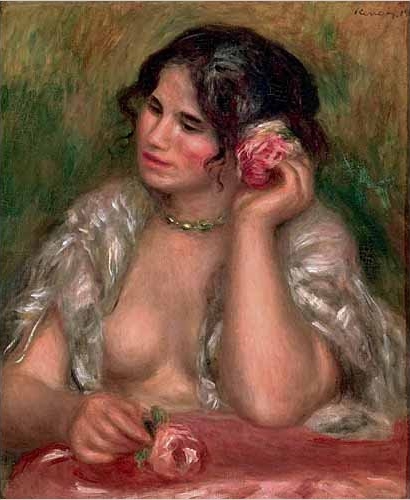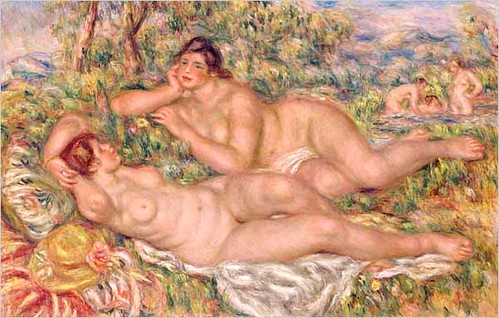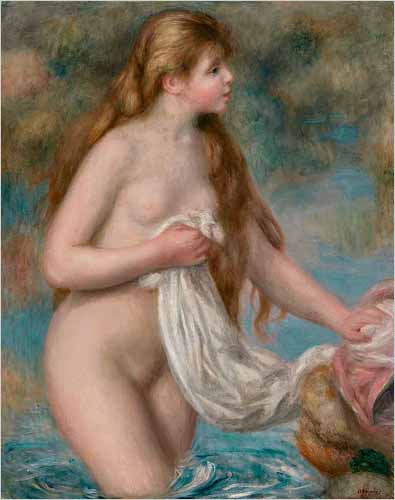The museum's website states:
Late Renoir follows the renowned painter Pierre-Auguste Renoir through the final—and most fertile and innovative—decades of his career. At the height of his creative powers and looking toward posterity, Renoir created art that was timeless, enticing, and worthy of comparison to the greatest of the old masters, such as Raphael, Titian, and Rubens. He devoted himself to joyful subjects—frolicking bathers, domestic idylls, the drama of classical mythology, and the brilliance of Mediterranean landscape and sea. His fluid brushstrokes and masterful use of color won the admiration of the emerging modernist avant-garde, who considered Renoir one of the greatest living artists. Approximately eighty paintings, drawings, and sculptures by Renoir are being displayed alongside twenty works by younger artists—Aristide Maillol, Henri Matisse, and Pablo Picasso among them—to illustrate, illumine, and celebrate Renoir’s legacy.I always have somewhat ambivalent feelings towards this great impressionist painter.Though I truly believe that he deserved his high regard, sometime I cringe when confronted by his more saccharine and sentimental works, as those represented in this exhibit.
I do like the beautiful Gabrielle With a Rose below, which was pretty but not overtly sweet. The suggestive facial expression was just that, very suggestive:

Gabrielle With a Rose
The Coiffure below is a fine character study and genre painting, if really nothing more. It did not offend:

The Coiffure
But I really don't have any stomach for his grotesquely fleshly female nudes, with feathery soft brush stokes, and individually beautiful but cumulatively chaotic and clashing colors of rose, salmon, blue, yellow and green. The overall feeling of this The Bathers below is so saccharine that it is rather offensive:

The Bathers, 1919
On the other hand, he produced other kind bathers, like the one below, which is quite praiseworthy for its delicate figure and the heavenly teal blue color, contrasting so wonderfully with the pink flesh and golden hair:

Bather, c. 1895





No comments:
Post a Comment